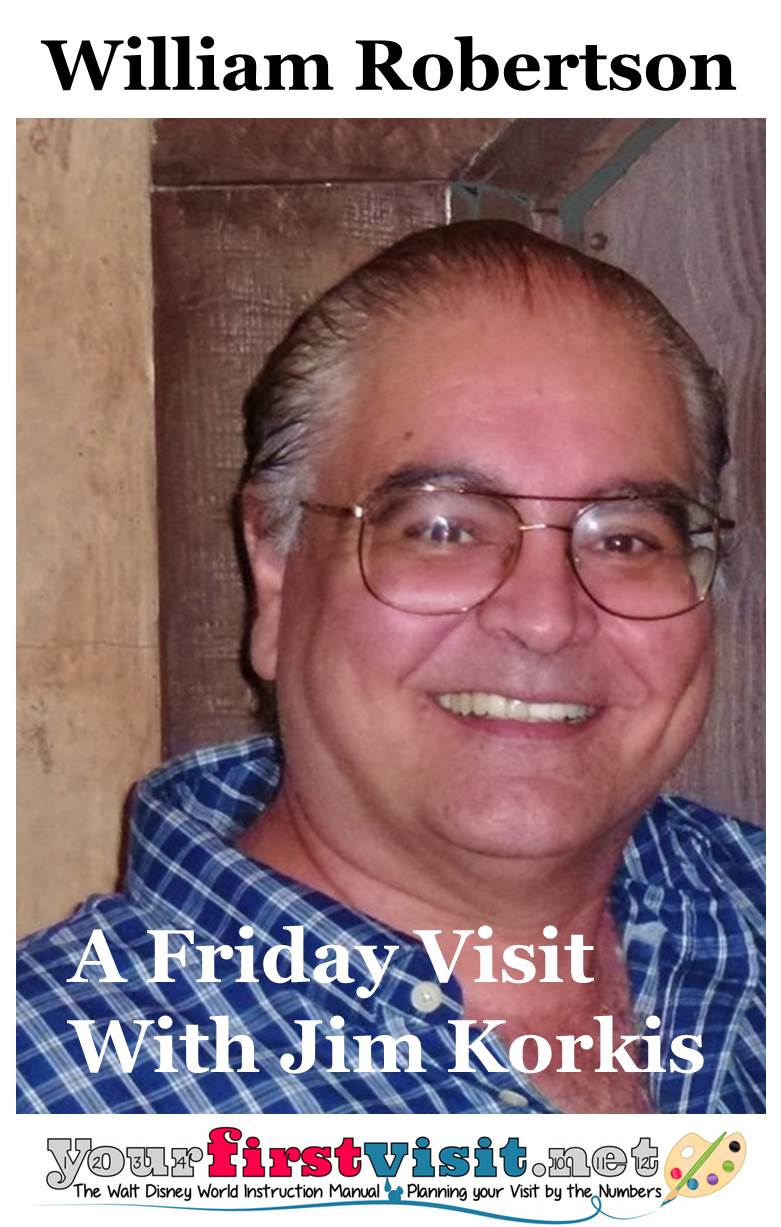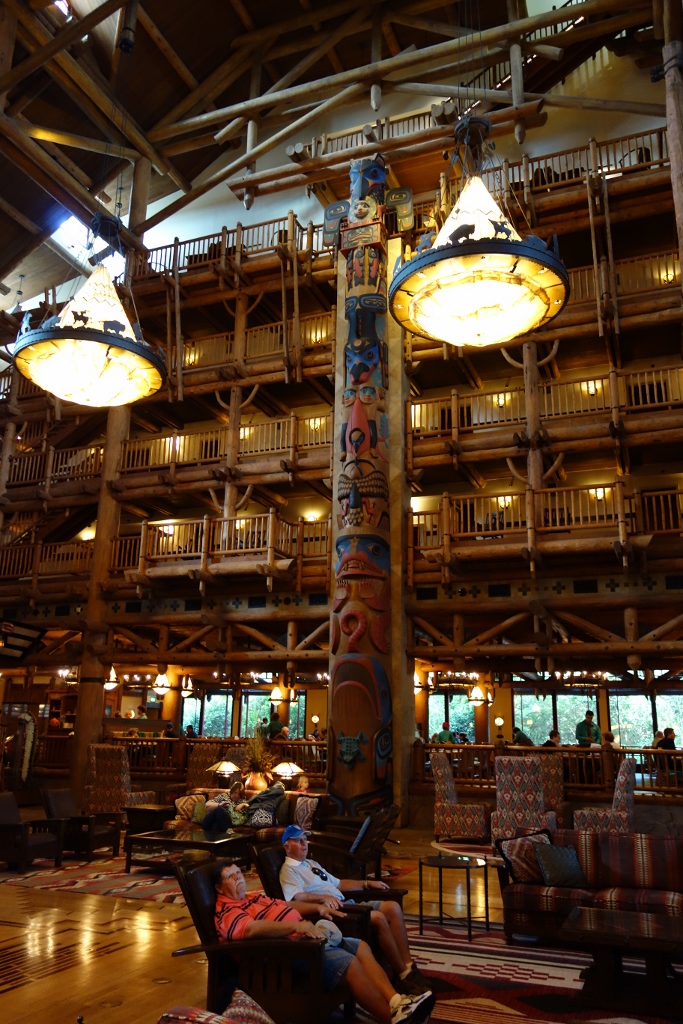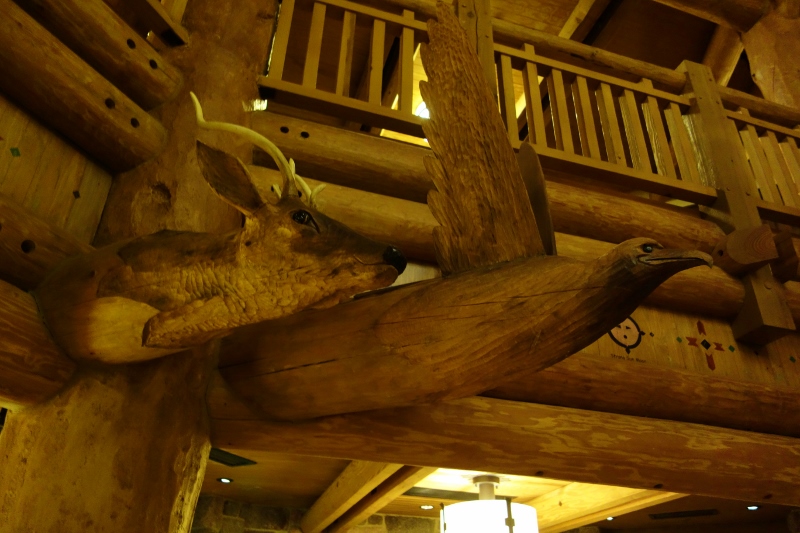A Friday Visit With Jim Korkis: Wilderness Lodge Sculptor William Robertson
By Dave Shute
Welcome back to Fridays with Jim Korkis! Jim, the dean of Disney historians and author of Jim’s Gems in The easy Guide, writes about Walt Disney World history every Friday on yourfirstvisit.net.
WILDERNESS LODGE SCULPTOR WILLIAM ROBERTSON
By Jim Korkis

A name you can learn about today is that of sculptor William Robertson, whose outstanding skills are on prominent display in the lobbies of both Disney’s Wilderness Lodge and the Villas at the Wilderness Lodge.
Robertson was a Disney character sculptor before becoming self-employed. Disney hired him to build frames for topiaries, which he did in the backyard of his College Park home. One of those topiaries is the fourteen foot long bison out in front of the entrance of the Wilderness Lodge.
Robertson was also responsible for the topiaries in the Johnny Depp film, Edward Scissorhands (1990).
Displayed in the posts of the Wilderness Lodge lobby are many carvings by Robertson, showing along their height four corresponding levels of animal life living in the wilderness.
At the lowest level, you find the creatures of the field and meadows, such as the turkey, raccoon, squirrel and rabbit. The animals on the next are those on the lower mountain, such as the wolf, pronghorn antelope, bison and elk.
On the third are those of the high mountain level such as the mountain goat, sheep, bear and mountain lion. The highest level has the birds of prey such as the falcon, American bald eagle, hawk and owl.
It took four tons of wood to create these creatures. On average, it was ten days to carve each animal using an electric saw, rotary saw, a chisel and a hammer.
Robertson did massive research and then rendered drawings that he used to create scale clay or plaster models as guides.
Mountain goats and some Rocky Mountain sheep look similar so Robertson had to emphasize the subtle differences in head shapes.
Disney suggested animals for Robertson, but the artist said that after that point he had a free hand.
”I had to know how to fit the animals into the trees,” Robertson said. ”Each animal had to be carved around the limbs, knots and rotten spots. There was no way to change the tree.”
Robertson said he wanted to “show the mark of the hands of the artist—not slick but a rough, human feeling”.
”Disney will try and do something artificially to meet fire codes or to get it to be weather-resistant,” Robertson said. ”But in this instance everything was done in the traditional way, by the artist, by hand.”
Every night during the six months before the hotel’s Memorial Day 19994 opening, Robertson climbed scaffolds to chisel into the pine logs. ”We finished the day before the hotel opened,” he laughed.
Robertson’s sculpture work can also be seen on the six brass animals at the check-in desk that were purposely positioned at a children’s level so they could be petted by curious youngsters.
The beavers in the elevator holding a long stick that is used as a railing are also the work of the sculptor, who at one time worked with Disney Legend Blaine Gibson, renowned for his Disney sculpting.
As a bit of whimsy, Robertson also took months to carve the cedar character totem pole outside the gift shop that features Mickey Mouse, Goofy, Donald Duck and Humphrey the Bear who was the official mascot of the resort.
”This wasn’t necessarily just another traditional Disney image,” he said. ”That was rather exciting as an artist. I had freedom to have a little fun. ‘I called an artist in Oregon to get advice on how to handle that kind of wood. I’d never have chosen cedar. It has to be kept sopping wet to cut it. But the other totem poles were also done in cedar.”
”The only problem was there was a lot for work to be done within a short period of time,” he remembered.
In seven months, Robertson went from working on eight-inch models approved by Disney directly to completing all the wood and bronze figures without ever making full scale models.
Robertson also came out of retirement to carve the animals in the lobby of the Villas at Wilderness Lodge that opened in the fall of 2000.
* * * * *
Thanks, Jim. For more from Jim on the Wilderness Lodge, see this. And come back next Friday for even more from Jim Korkis!
In the meantime, check out his books, including The Vault of Walt, Who’s Afraid of the Song of the South?, and The Book of Mouse
, and his contributions to The easy Guide to Your First Walt Disney World Visit, all published by Theme Park Press.
MORE DISNEY WORLD HISTORY POSTS FROM JIM KORKIS
- “Summer Magic” on Main Street
- Muppets and Mama Melrose
- Peter Dominick and the Wilderness Lodge
- Dixie Landing and Port Orleans Riverside
- The History of Splash Mountain
- The First Disney World Hotel
- The “Sharing the Magic” Statue
- The First Disney World Monorails
- The Water Park River Country
- The Epcot Fountain
- The Fireplace at the Wilderness Lodge
- Sid Cahuenga at Disney’s Hollywood Studios
- Spaceship Earth
- Downtown Disney
- The Missing Resorts
- Echo Park Homages
- Typhoon Lagoon
Follow yourfirstvisit.net on Facebook or Google+ or Twitter or Pinterest!!





1 comment
Please, I have an inquiry about a Robertson Disney sculpt and I could really use your opinion. I am wondering if you could take a look at some images and let let me know if you can identify it. Thank you for any time and consideration to my request. 🙂
Leave a Comment | Ask a Question | Note a Problem